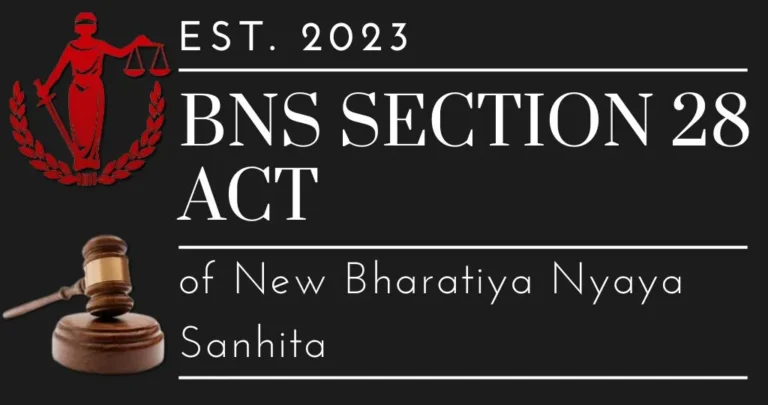
Practical Implications of the Charge Provisions in the Bharatiya Nagarik Suraksha Sanhita, 2023
Practical Implications of the Charge Provisions in the Bharatiya Nagarik Suraksha Sanhita, 2023
In the initial part of this article, we discussed the fundamental elements of Section 234 of the Bharatiya Nagarik Suraksha Sanhita, 2023, including the form, structure, and particular requirements for the drafting of charges. In this second part, we shall discuss the practical implications of these provisions on the judicial process, legal practitioners, and the accused. We will further address the importance of these charge-related rules to a fair trial, the relevance of the charge language, and how courts construe and implement these rules.
Significance of Clarity in Charging
For More Updates & Regular Notes Join Our Whats App Group (https://chat.whatsapp.com/DkucckgAEJbCtXwXr2yIt0) and Telegram Group ( https://t.me/legalmaestroeducators ) contact@legalmaestros.com.
The most important aspect of the charge, as enshrined under Section 234, is that it must be precise. An inadequately framed charge can prove disastrous for the prosecution, with the possibility of acquittal for the accused because of technical faults. The specificity demanded under this section ensures that there is no confusion regarding the charges framed against the accused, enabling them to comprehend the charges fully and plan their defence appropriately.
Practically, legal experts, especially criminal law practitioners, need to be very careful with the language of the charge. The charge may be challenged by the defence as inadequate if it is imprecise or does not include the name of the specific offence or section of the law infringed. Courts have power to refuse to proceed with, or to order to alter, the latter category of charges, thus causing delays in the course of trial.
For example, if the charge alleges that https://www.lexology.com/library/detail.aspx?g=491adaee-6f20-43f4-911a-f8dbafa0dd34the accused inflicted “grievous hurt” but not that it was inflicted with a dangerous weapon (as mandated by Section 118(2) of the Bharatiya Nyaya Sanhita, 2023), the defence may plead that the charge is deficient. The prosecution would then need to rectify the charge, perhaps putting the trial in jeopardy. This underlines the necessity for making sure that all details mandated by Section 234 are stated at the time of framing the charge.
Role of Charges in Ensuring a Fair Trial
The right to a fair trial is a cornerstone of criminal law, and the provisions in Section 234 of the Bharatiya Nagarik Suraksha Sanhita are important in ensuring that this right is upheld. By specifying the offence and the law under which the accused is charged, the Sanhita ensures that the accused is not left in the dark regarding the charges against them.
A well-written charge also serves to avoid unnecessary litigation on technical grounds. If the charge is precise and complete, the accused can concentrate on refuting the substance of the charges instead of questioning the legitimacy of the charge itself. This simplifies the trial process and minimizes the chances of technicality-based appeals, making the judicial system more efficient.
In addition, the condition under Section 234(5) that the charge must presume all legal requirements have been fulfilled also favors an equitable trial. The provision deters the prosecution from filling the charge with extraneous technicalities, thus keeping the charge brief and simple. The accused, his or her legal representative, and the court can then concentrate on the essential facts of the case, without ambiguity regarding technicalities.
Comprehending Section 234(7): Prior Convictions and Increased Punishment
The reference to a previous conviction under Section 234(7) is an additional complicating factor in the charge. When the accused has a previous conviction of an offence, the law permits increased punishment when the accused is convicted of a second offence. This implies that the accused could receive a heavier sentence than he would have for the same offence if it was his first conviction.
However, the prosecution is required to make this explicit in the charge. The previous conviction must be stated by fact, date, and location so that the accused can know that their previous criminal history will influence their penalty. This provision provides openness in sentencing and allows the accused to be able to challenge the prior conviction if need be.
For instance, if an individual has a past conviction for theft and is subsequently charged with a further theft, the prosecution could request an aggravated sentence because the crime is repetitive. If the charge does not include this stated, the defence may claim that the enhanced penalty is unjust and the court may not be able to take into account the past conviction when deciding on the sentence.
This provision further enables the court to review the accused’s criminal record in a formal and equitable process, as opposed to using imprecise or unverified evidence. The fact that the court can modify the charge to incorporate prior convictions prior to the passing of the sentence ensures that the information can still be used even if it was not provided initially.
The Importance of the Charge’s Language
The provision for the charge to be framed in the language of the court under Section 234(6) is especially relevant in India’s multilingual setting. India boasts 22 recognized official languages, and the official language of the courts differs from state to state. The Sanhita appreciates the need to ensure that all legal papers, including charges, are submitted in a language comprehensible to the court, the accused, and the legal practitioners.
This requirement serves to prevent misunderstanding and ensures that the accused knows fully what charges he or she is facing. It also prevents the accused from being disadvantaged since he or she does not know the language in which the charge has been written. In courts whose local language differs from that spoken by the accused, translators or interpreters could be employed to make sure that the accused comprehends the charges.
Furthermore, this provision assists in upholding the integrity of the judicial process since it guarantees that everyone involved is working on a shared language base. It minimizes the chance of mistakes that may be caused by poor communication or misinterpretation, which enables an equitable trial.
How Courts Interpret Charges and the Role of Amendments
Courts have an important role to play in explaining the terms of Section 234. Judges need to make sure that the charge is clear, legally sound, and conforms to the Sanhita requirements. In case a charge is defective, the court may direct amendments thereof, subject to such amendments not prejudicing the accused’s rights.
For instance, if the charge does not state in precise terms the particular section of the law under which the offence is charged, the court can permit the prosecution to vary the charge so that this is stated. But this variation will have to be done before sentence is passed, and the accused given a chance to respond to the varied charge.
The courts also understand the extent of the offence outlined in the charge. This comes into play specially when the offence is not otherwise named by statute, and so the charge shall contain part of the legal definition, as necessary under Section 234(3). Judges make sure that the charge gives the accused sufficient details to know about the offence, but in turn, remains to the point.
Illustrations as Guidance in Framing Charges
The illustrations given under Section 234 provide useful guidance to legal practitioners in framing charges. The illustrations explain how charges must be framed in certain circumstances, and it becomes simpler for prosecutors to prepare charges that are both legally sound and comprehensible.
For example, Illustration (a) illustrates the way a charge of murder needs to be phrased so that there is no need to mention the general exceptions or specific exceptions unless they are applicable. This makes sure that the charge is concentrated on the offence at hand without incorporating unnecessary details to confuse the accused or complicate the trial process.
So too do Illustrations (d) offer a guide to how to word a charge for obstructing the sale of property by a public servant in simple and concise terms. These illustrations are useful aids for legal practitioners to promote consistency and clarity in drafting charges.
Conclusion
The provisions regarding charges under Section 234 of the Bharatiya Nagarik Suraksha Sanhita, 2023, aim to provide clarity, fairness, and transparency to the criminal justice system. Through the specific rules regarding the form and content of charges, the Sanhita protects the rights of the accused while allowing the prosecution to put its case across effectively.
The need for accuracy in charging, the mention of past convictions for enhanced punishment, and the necessity to draft the charge in the court’s language all serve to promote a just and equitable trial. Courts have a significant role in ensuring that these provisions are observed and that defects in the charge are corrected by way of amendment where required.
Generally, the rules provided in Section 234 align with the Sanhita’s determination to maintain the precepts of justice and see that the accused are absolutely aware of the charges that they are facing. The rules strike a balance between the interests of the prosecution and the defence to guarantee that the judicial process remains equitable and open to all parties concerned.






